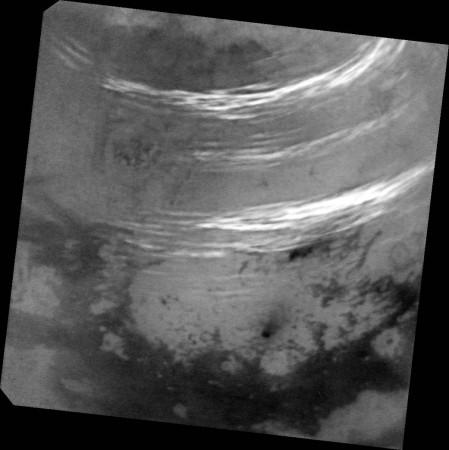
A new image of Saturn's moon Titan has been captured by NASA's Cassini spacecraft. It shows bands of bright, feathery methane clouds drifting across Titan.
Also Read: NASA's Hubble discovers a stunning galaxy duo in Hare constellation
The image was captured from a distance of around 316,000 miles from Titan on May 7. These clouds formulated in Titan's northern hemisphere as summers approached, NASA said in a statement.
Cassini snapped this image while preparing to make the fourth flyby between Saturn's cloud tops and innermost rings during its Grand Finale, a Space.com report revealed.
The ringed planet's largest moon is classified as the second largest moon present in the solar system after gas giant Jupiter's moon Ganymede. The atmosphere of Titan is nitrogen-rich and possesses a hydrocarbon-based weather system which leads to liquid methane rains in its atmosphere.
The liquid methane forms seas and lakes on Titan's surface which appear as dark blots in the new photo taken by Cassini.
Titan is the only celestial body apart from Earth which is known to harbour liquid water on its surface. Titan also experiences changes in seasons.

NASA officials also revealed that lately-captured images by Cassini have portrayed "some of the most intensely bright clouds" detected on Titan so far. The images also revealed a belt of 'dunelands' near the moon's equator.
The images also revealed pockmarked features present near the top of the moon's surface which were found to be ethane and methane seas.
"Titan is also believed to hide an underground ocean of salty liquid water and ammonia. However, that is yet to be proven right," as per a spaceflightnow.com report.
The Grand Finale is the last act of the Cassini spacecraft which would end on September 15, 2017 with the help of a controlled fall into Saturn's atmosphere. The spacecraft is presently running low on fuel and its plunging into Saturn's atmosphere has been planned to prevent it from contaminating Titan's potential life-sustaining environment.








